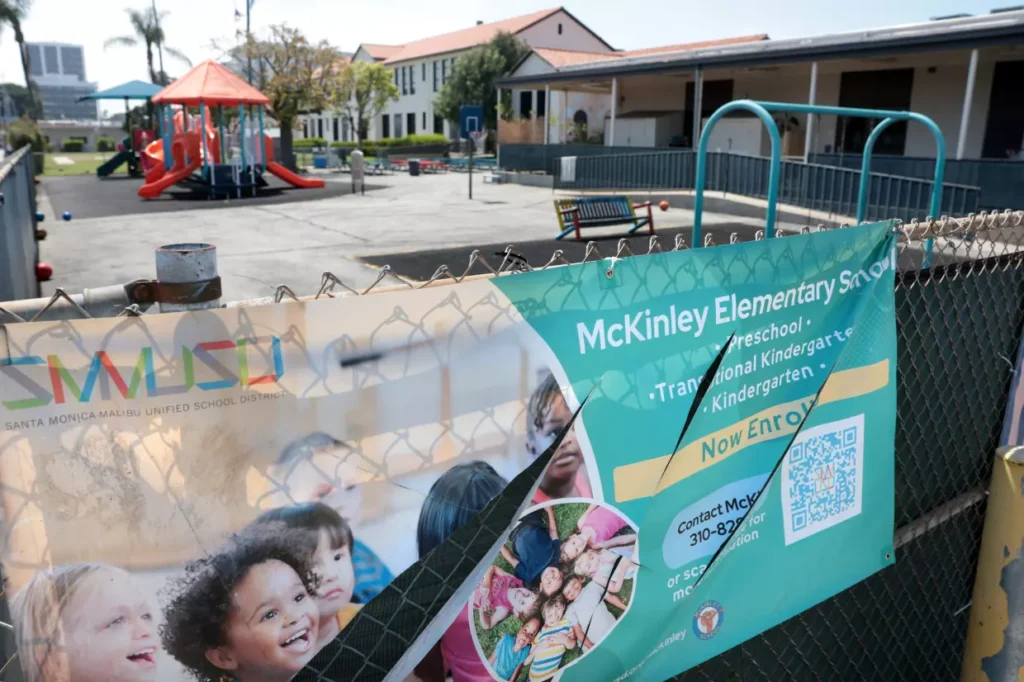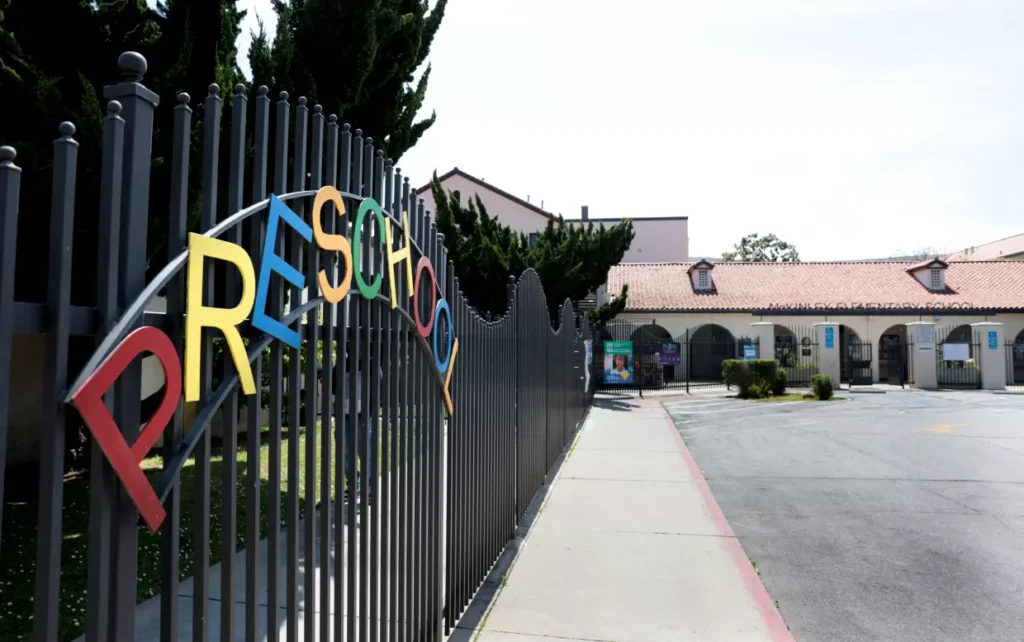
(Wally Skalij / Los Angeles)
[latimes.com – 2024.04.22] For years, school district officials had grand designs to revamp the campus of McKinley Elementary in Santa Monica. Last year, however, a district-hired inspector discovered dangerous levels of toxic vapors percolating in the soil at the proposed construction site, a parking lot on the northeast end of campus. Since then, state regulators have concluded the contaminants likely migrated underground from a dry cleaner across the street.
Although these hazardous fumes were not detected above state health limits inside school buildings, regulators determined the contamination could pose a risk to public health if the ground were disturbed or new construction was sited on top.
The pollution has complicated the district’s renovation plans, which will require new safety measures and soil remediation. Meanwhile, the state has reached out to TJ Cleaners to clean up its property to prevent contamination from continuing to spread.
But the site is one of more than 8,600 active and former dry cleaning facilities across California, an industry that leaves contamination at 75% of its sites, according to the state Department of Toxic Substances Control. The most notable contaminant, perchloroethylene (PCE), is a cleaning solvent that has been linked to several types of cancer.
California banned the use of PCE at dry cleaners in 2023, after decades of use as a dirt- and stain-removing agent. But historically, it was common practice to dump these chemicals in the rear of the business or flush them down the toilet, according to state officials.
“You can see where people just took buckets full and tossed them out,” said Jane Williams, executive director of California Communities Against Toxics. “So, there was basically — what would be considered now — all kinds of illegal disposal. Almost every historic dry cleaner can have some type of contamination.”
In 2021, state lawmakers dedicated $152.5 million for the Department of Toxic Substances Control to investigate dry-cleaning facilities and search for these underground plumes of contamination. So far, the state has honed in on more than 100 dry cleaners statewide, including more than 70 in Los Angeles County.

(Wally Skalij / Los Angeles)
In Santa Monica, the soil contamination at McKinley Elementary was discovered during state-mandated environmental testing, which precedes construction that requires excavating soil.
The highest measurement of PCE in soil was around 2,600 parts per cubic meter, more than 10 times higher than the state limit. Other toxic chemicals including benzene and trichloroethylene also exceeded state health standards in the soil.
The contamination, state officials say, likely originated at TJ Cleaners, a dry cleaner that has operated since 1991.
The state has called on TJ Cleaners to clean up its property with state oversight. TJ Cleaners owner Albert Masangcay said he wasn’t aware of contamination and that his lawyers are reviewing a letter from the toxic substances agency. He added that dry cleaning is done off site.
Read the original article on latimes.com

